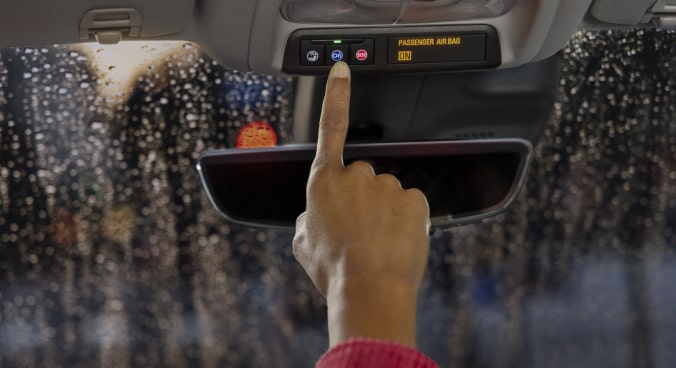From cold weather that tests your vehicle’s limits to slippery, low-visibility driving conditions that test your nerves, here are five winter driving scenarios that may help you prepare for the toughest situations winter has to offer.
1. Your car begins to skid on an icy surface
- Take your foot off the gas.
- Gently turn your steering wheel in the direction you are moving.
- Gently apply the brake — avoid slamming on the brakes.
Tip: Your tires can make a big difference in your level of control. Be sure they are inflated to your vehicle manufacturer’s recommendations and have sufficient tread. Suggested tread depth for when to replace your tires can vary, but your Dealer can check this for you.
OnStar can help: If you do skid into a crash and need help, an OnStar Emergency Advisor

2. You become stuck in the snow
- Try to free your vehicle gently. Pushing hard on the gas pedal and spinning the tires can dig you in deeper. Instead, “rock” the vehicle by pressing the accelerator gently to move forward a couple inches, brake, and then reverse a couple inches. Repeat a few times to see if you can free your vehicle.
- If you have a shovel, clear snow from the front and back of each tire and under the vehicle.
- Be sure your tailpipe is not clogged — that could cause carbon monoxide to enter the vehicle.
- If you can’t free your vehicle, turn on your interior, exterior and hazard lights, stay with your vehicle, and clear off snow as it accumulates. It will make it easier for work crews to see you and rescuers to find you.
Tip: Keep your gas tank filled in the winter. It will help keep your fuel line from freezing and carry you through unexpected traffic snarls, and you’ll be able to run the engine to keep the car warm if you are stuck. Keep a shovel and ice scraper in your trunk, as well as a bag of sand or kitty litter to help provide traction.
OnStar can help: If you have trouble with your vehicle, you can push your blue OnStar button
3. A sudden winter squall creates dangerous road conditions
- Turn on your headlights, and turn off cruise control if you’re using it.
- Stay in the right lane in case there are less careful drivers who want to pass.
- Be extra smooth when you’re accelerating, braking or steering.
- Watch for icy patches
Tip: You can often see a snow squall coming. If you’re able, pull off the
road to a safe location and wait until it passes; keep your hazard lights on to
be sure your vehicle is visible to other drivers.
OnStar can help: With the Guardian® app, you can share your location

4. There's a multi-car pileup on the road just ahead, and you can't stop
- Be sure you and all passengers stay in your vehicle with your seat belts fastened. If no one in your vehicle is injured, it may be tempting to get out and check on people in other cars, but approaching cars can still pose danger.
- Put your flashing hazard lights on.
- Even if you are not directly involved in the pileup, you can push your red Emergency button
* to report the crash. - Write down everything you have observed about the incident and take photos for insurance purposes.
- Wait until law enforcement tells you it is safe to leave your vehicle.
Tip: Increase your following distance enough so that you’ll have plenty of time to stop for vehicles ahead of you. In low visibility conditions, increase the distance even further and reduce your speed.
OnStar can help: If you observe a crash, even if you are not involved, you can be a Good Samaritan and push your red Emergency button in the vehicle or in the Guardian app to report the incident. Our OnStar Advisors can contact 911 to report the crash and request assistance.

5. Your car won't start
- Shut the car doors and turn off all accessories — lights, radio, etc.
- Turn the key, or push the start button, and hold it for no longer than 10 seconds.
- If your engine doesn’t start but you see dashboard lights, you have some battery power.
- If you hear nothing — no click, no motor noise and no dashboard lights — your battery may be completely dead, and you’ll need a jump start.
- If you hear the motor cranking but the vehicle does not start after 10 seconds, wait a minute or two before trying again.
Tip: If your battery is more than three years old, it’s a good idea to change it before the cold weather takes its toll.
OnStar can help: If you have battery power, you can push the blue OnStar button in your vehicle or the Roadside button in the Guardian app to request Roadside Assistance,





















